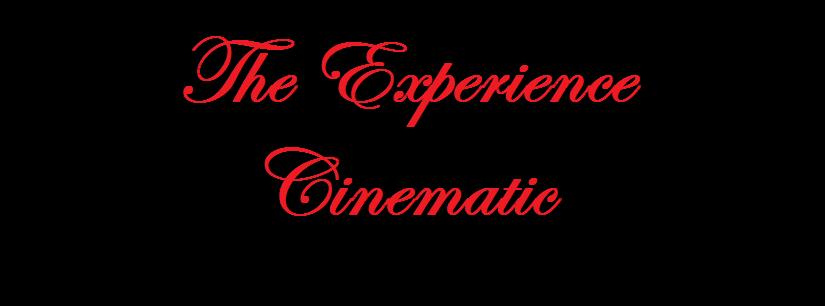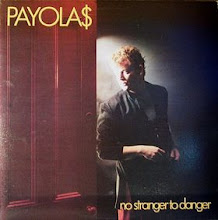
My fellow film fans, we need to be honest for one second. Once we get outside our exclusive and knowledgeable circle, there are some things about the basics of film that the average person does not know, or is only vaguely familiar with. For example, many people will know and understand what writers and actors do, but editors and producers? Not a chance, unless someone goes out of their way to explain and educate them. Even the best of us will have a hard time determining just what the difference is between an “Executive Producer” and a regular old “Producer” credit on a given film.
Then there is directing, which exists in some bizarre state where the general public sort of knows what the job entails, or at least knows that a director gets to yell “action” and “cut.” Even if a non-film geek understands the general idea that the director more or less guides the film from being a script to a finished work, bringing to the film some ethereal “vision” to guide whole project, it is still a fairly vague notion that is hard to properly explain unless the person has some working knowledge of filmmaking, particularly when one starts getting into concepts such as auteur theory. Poorly explained, the job of a director can come off as being nothing more than a project manager, rather than a creative individual.
It is for reasons such as this that I am happy that bad films exist, for they may be the greatest teaching tool for explaining film making. Film goers are used to basic competence at the very least when going to the cinema, so the absence of such competence can clarify the nature of jobs such as directing by showing what a film can be without a guiding hand. For this reason, the 1991 sci-fi/superhero/martial arts/monster disaster Guyver is a God send, giving those wishing to teach film basics the perfect tool for explaining what a director is, and what at least a decent one needs to bring to a film.
 Guyver, based on a manga of the same name which I have never read, tells the tale of one Sean Barker (Jack Armstrong), a young man who, in a fit of concern for a woman he cares about, follows her to the scene of a crime where her father was murdered, and stumbles upon something called the Guyver Unit. The Guyver is a bio-armour which seems to enhance the abilities of the user and grant other powers, left on Earth by a group of mysterious aliens from the dawn of man. It seems these aliens made man to function as a weapon of some sort, and have given mankind a gene which, when activated, allows a person to switch between their human form and that of a freakish monster. The Kronos Corporation, which knows about our species secret history, is attempting to forge an army of these monsters, and recover the Guyver, in an attempt to take over the world. Once Sean is accidentally bound with the armour, it is up to him, and a tough CIA agent named Max Reed (Mark Hamill) to save the day.
Guyver, based on a manga of the same name which I have never read, tells the tale of one Sean Barker (Jack Armstrong), a young man who, in a fit of concern for a woman he cares about, follows her to the scene of a crime where her father was murdered, and stumbles upon something called the Guyver Unit. The Guyver is a bio-armour which seems to enhance the abilities of the user and grant other powers, left on Earth by a group of mysterious aliens from the dawn of man. It seems these aliens made man to function as a weapon of some sort, and have given mankind a gene which, when activated, allows a person to switch between their human form and that of a freakish monster. The Kronos Corporation, which knows about our species secret history, is attempting to forge an army of these monsters, and recover the Guyver, in an attempt to take over the world. Once Sean is accidentally bound with the armour, it is up to him, and a tough CIA agent named Max Reed (Mark Hamill) to save the day.Now, I hate to place films into easily definable categories, be it genre, target audience, etc., as a large number of my favourite films tend to bend and break such easy categorization. However, when films proceed to play with such categories, in order to succeed, such films need to have a clear sense of internal direction and focus in order to work: they need a clear identity, which is what a director is supposed to provide. Shaun of the Dead, for example, deftly blends horror, dark comedy and the romantic film genres together, working together simultaneously yet never clashing, unless the filmmakers wish these elements to do so.
Guyver however is a film that lacks any sense of identity at all, veering between being a kid friendly Teenage Mutant Ninja Turtles rip off, a science fiction horror film ala Re-Animator (whose cast is cannibalized here), and a martial arts superhero film. Every scene in the film exists in their own little world, forcibly being joined together by a recurring and jarring transition edit that would have been out of place on the old Adam West Batman series. Gore and violence give away to rapping monsters, and vice versa, with the filmmakers succeeding only in creating bewilderment on the part of the viewer, and not in a good way.
 The main cause of such inconsistency is that the filmmakers seem to have no idea just what the story they are supposed to be telling is, or more accurately, whose story is being told. My early description of the film’s narrative is deceptive, as it offers a more cohesive view of the film’s story than actually exists in the finished film. The film is divided between three different characters: the already noted Sean and Max Reed, as well as Mizky (Vivian Wu), Sean’s sort of love interest and daughter of the scientist murdered at the start of the film. While the set up of the film naturally lends itself to Max and Mizky being the protagonists, the filmmakers do their best to make Sean into our lead. The problem is that Sean has the least reason to be in the film: he has no character, no history, or at least nothing that the filmmakers are willing to share. As such, he has no actual point to existing at all, other than to be a typical young male hero. Since Sean has no direction to move in, the rest of the film has no direction to move in either, and thus the film becomes a mess of scenes without structure.
The main cause of such inconsistency is that the filmmakers seem to have no idea just what the story they are supposed to be telling is, or more accurately, whose story is being told. My early description of the film’s narrative is deceptive, as it offers a more cohesive view of the film’s story than actually exists in the finished film. The film is divided between three different characters: the already noted Sean and Max Reed, as well as Mizky (Vivian Wu), Sean’s sort of love interest and daughter of the scientist murdered at the start of the film. While the set up of the film naturally lends itself to Max and Mizky being the protagonists, the filmmakers do their best to make Sean into our lead. The problem is that Sean has the least reason to be in the film: he has no character, no history, or at least nothing that the filmmakers are willing to share. As such, he has no actual point to existing at all, other than to be a typical young male hero. Since Sean has no direction to move in, the rest of the film has no direction to move in either, and thus the film becomes a mess of scenes without structure.Such a problem should never have existed, and first time directors Screaming Mad George and Steve Wang should have attempted to address this in some manner before filming began. Unfortunately, their focus seems to be on one thing and one thing only: their creature effects. Having both designed and built the creatures of the film, George and Wang spend most of the running time focusing on extended sequences of their creations in action, ignoring the fact that the actors are all over the map and that no time and effort seems to have been spent on the set design and editing. I don’t think I have seen such a visually bland production in quite some time, and one has to wonder why George and Wang were not removed as the dailies came in. Perhaps I am being too harsh on the directing duo, but given that the version I viewed of the film is billed as a “Director’s Cut,” their role in the film comes to the front and center.
 If Guyver does have a saving grace, it is that the film is so awful that it is often hilarious, from Mark Hamill’s attempt to be bad ass, to the hilarious facial gestures of Jack Armstrong during is out of suit fight scenes. Were the series still in production, I can almost guarantee that Guyver would have been featured on Mystery Science Theater 3000. Instead, audiences will have to settle with creating their own commentary track for the film.
If Guyver does have a saving grace, it is that the film is so awful that it is often hilarious, from Mark Hamill’s attempt to be bad ass, to the hilarious facial gestures of Jack Armstrong during is out of suit fight scenes. Were the series still in production, I can almost guarantee that Guyver would have been featured on Mystery Science Theater 3000. Instead, audiences will have to settle with creating their own commentary track for the film.However, such faint praise hardly makes Guyver worth a recommendation, and has only managed to amount to yet another painful review experience in a month full of them, as I try and find something worth saying about the films thus far. Thankfully, I have much higher hopes for our next film, Ponyo.


Having seen the original Anime series, i can pretty much tell you that Guyver, like so much other stuff from that Oceanic Wonderland - just doesn't make any sense whatsoever.
ReplyDeleteSo the flaws with the film's plot are definitely carried over from the anime.
This leaves me to wonder if these flaws were also part of the original manga series as well. I am have tempted to seek it out, expcept for what the effort might do to my mental health... ;)
ReplyDeleteIt's not worth it! Dammit man! No one should abuse their abilities of cognizance in such a hostile manner!
ReplyDeleteI have already sat through GUYVER DARK HERO: I may have already passed the ppoint of no return!
ReplyDelete